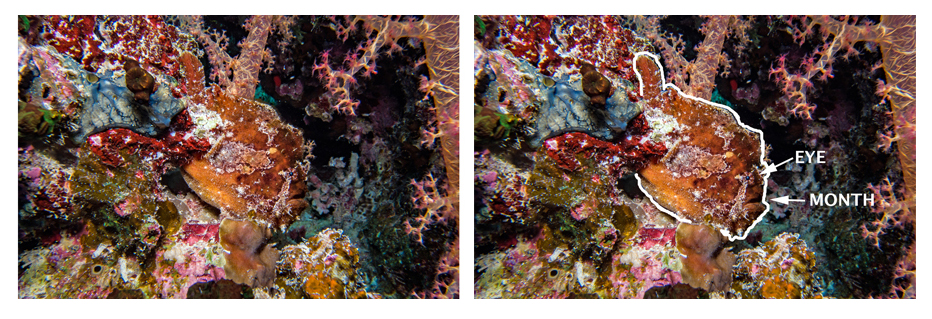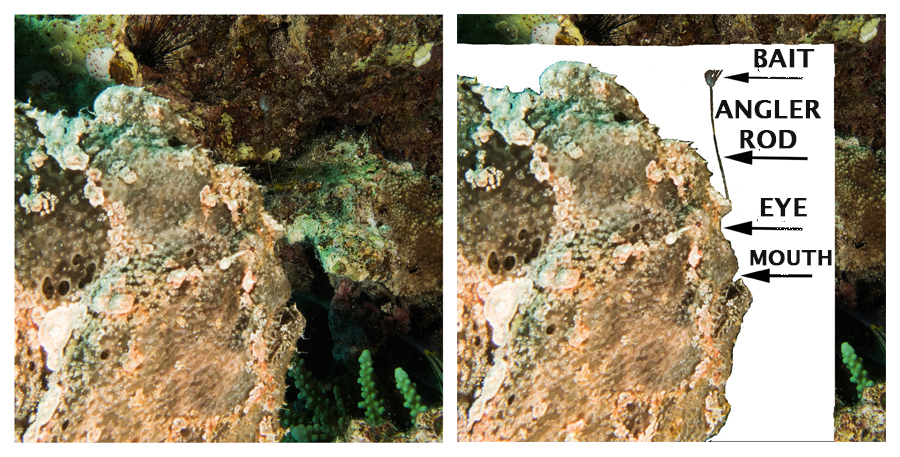FROGFISH ANTENNARIIDAE
It is rare to see a frogfish as a diver. This is because the frogfish is a master of camouflage. They are helped by their atypical bulky shape and their color, which matches their surroundings, making them look like an overgrown rock, coral or sponge.

Freckled frogfish ( Antennarius coccineus) 12 cm large
The frogfish uses perfect camouflage not only to protect itself from predators, but also to be perceived as a food source by its potential prey, shrimp and fish. In behavioral research, this is called attack mimicry. The frogfish has developed something unique for this purpose. In the first dorsal fin, above the head, there is a "fishing rod", the illicium, with the bait of the esca attached. For us divers, this fishing rod is practically invisible, which is why it is made visible in the picture at the bottom right by retouching the background.

Giant frogfish ( Antennarius commersoni) 25 cm large
The length of this rod varies depending on the species. In any case, it is used to attract fish that want to eat the supposed bait. If they fall for it, it's all over for them. In a fraction of a second, the frogfish opens its mouth and sucks its prey into its mouth. Frogfish are loyal to their location and can therefore be observed over a longer period of time once they have been discovered. Frogfish are at home in all tropical and subtropical seas, at a water temperature of at least 20 °C at the surface. They belong to the group of bony fish. Their size varies between 5 and max. 40 cm. Scientifically researched and known are 31 species. Of these, the four species found in the Red Sea are the giant frogfish (Antennatus commersoni), the warty frogfish (Antennarius maculatus), the round-spotted frogfish (Antennarius picticus) and, very rarely, the Saragassum frogfish (Histrio histrio).

